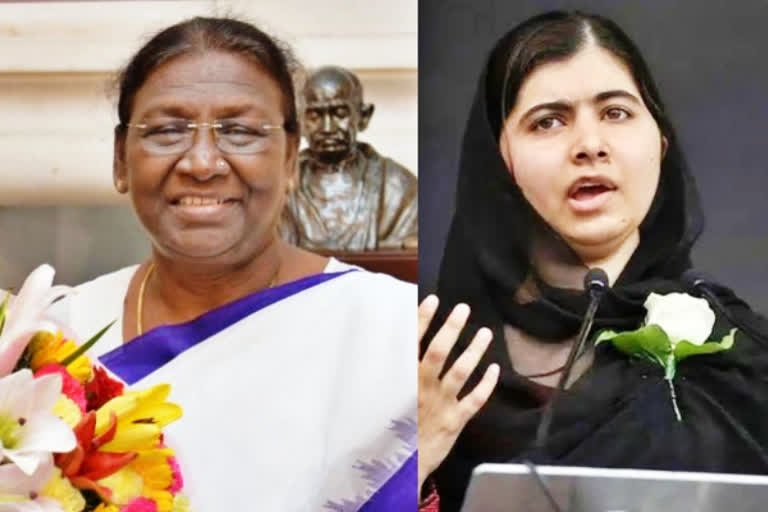Hyderabad:In the Indian subcontinent, President Droupadi Murmu and Nobel Laureate Malala Yousafzai are two women who are renowned for their perseverance and ability to mark the great beginning of matriarchy rather, equal participation of women in all sectors. Depending on the conditions and factors that have caused them to achieve popularity, the very publicity can occasionally reveal the nakedly unpleasant side of society. Additionally, it also sometimes represents the attractive aspect of evolution and development, making the growth more palpable.
Malala, a Pashtun girl from Pakistan's Khyber Pakhtunkhwa (KPK) region, was shot at more than a decade ago by militants of the Pashtun tribe who banned tribal women from attending school on the grounds of Islamic law. She was shot because she defied militant orders, continued her studies, and persuaded others to do the same. She rose to prominence after she continued her fight for girl education in the region where she faced a life threat. Her dedication and fearlessness earned her the Nobel Peace Prize. Malala serves as a reminder of the brutality extremist tribals inflicted on women in Pakistan's erstwhile FATA (Federally Administered Tribal Areas) region.
On the other hand, Murmu's rise from a tribal village girl to the highest office serves as a parable for India's tribal evolution. She's a member of the Santhal tribe. The Santhal tribe is mostly found in the four Indian states of West Bengal, Odisha, Assam, and Jharkhand. She is special and unique because she is a Santhal; else, India already had a female president. Murmu's journey from a classroom teacher to Rashtrapati Bhawan serves as a parable for the overall development of tribal people in India.
Also read: Madam President Murmu: From tribal woman to youngest president of India
On the day the ruling party BJP announced Droupadi Murmu as its presidential candidate, the Santhal clan rose to fame throughout India. People were curious to learn more about the tribe to which the presidential candidate belongs. The Santhals, who make up the largest tribal community among the total eight per cent of Indian tribal people, were extensively profiled in the media, with numerous stories detailing their way of life and political acumen.
In terms of bravery and fighting prowess, Santhals are comparable to the Pashtuns of Khyber Pakhtunkhwa in neighbouring Pakistan. Similar to how Pashtuns produced freedom fighters like Khan Gafar Khan of the former NWFP (North West Frontier Province), now KPK, Santhals have produced revolutionaries who have battled against British rule. Tilka Manjhi, one of the freedom fighters from the Santhal Tribe, led the first tribal armed rebellion against the British. Thalakal Chandu, another Santhal, fought and captured the British fort in Kerala, and was later executed.
Sidho kanho, a well-known Santhal and freedom fighter, led the protests against British rule and later gave tribals a code of life to live with honour and dignity.
The Pashtuns also produced many more fighters like Gafar Khan who was a product of the same region that gave birth to Malala Yousafzai. While Khan reminds us of Gandhi and Nehru and their fight against cruelty and occupation, Malala reminds us of the denial of women's rights and atrocities committed against women.
